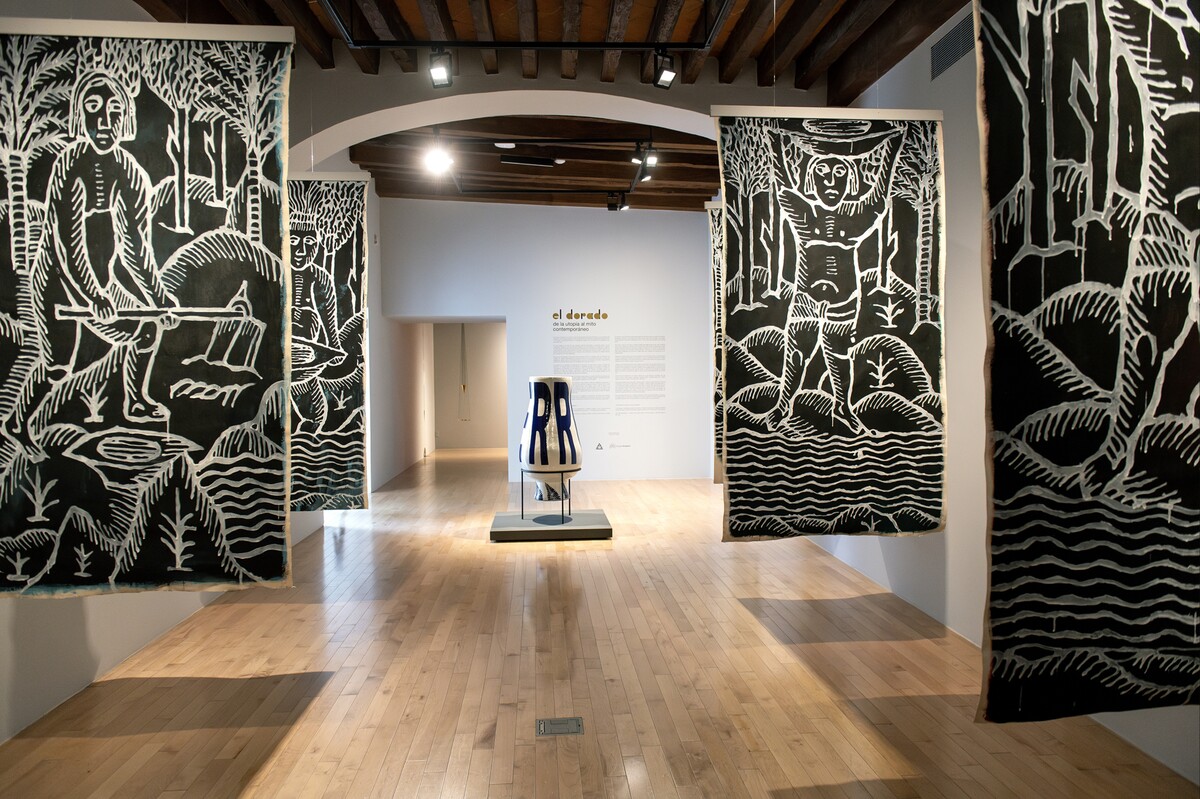
Installation view of El dorado. Courtesy of the artist and Museo Amparo, Puebla, MX.
El dorado is one of the founding myths about the discovery and conquest of America. Europeans arrived in the newly discovered lands laden with thoughts and beliefs inconceivable to the native inhabitants. One of them was the obsession with finding gold.
The myth, linked to the idea of material wealth attainable at any price, has remained alive in the collective unconscious of humanity throughout history. Nowadays it hides behind masks as diverse as individuals imagine it and go out in its search. Since each person have their own idea about what and how el dorado is; and it is precisely this that drives individuals to pursue the image they have created for themselves of an idealized life.
Hence, the initial question can only be asked in front of a mirror that in principle gives us back a fragmented reflection of ourselves. A way of alluding to the idea of mirage, related to the fantasy upon which the myth of an idyllic place made out of this precious metal was built, which in reality was never found.
Utopia is an important element in the creation of this myth. For the yearning to achieve an ideal state of abundance and well-being based on lofty principles of coexistence is inherent in this aspiration of mankind. However, when ambition gets out of control and responds to greed interests the utopian dream is distorted and reveals its darkest faces, in the form of a dystopian reality in which all kinds of exploitative acts are carried out.
Like all human elaboration, el dorado stands on a dual world of concepts that, like coins, has two sides: utopia / dystopia, material reality / spiritual reality, life / death, welfare / scarcity, wealth / poverty, light / darkness.
The tale proposed here articulates diverse artistic, religious, alchemical, and sacred components, as well as its dark sides of ambition, violence, death, and destruction in a re-reading that without pretension of truth offers a version that goes from utopia to the construction of the myth from the perspective of contemporary art. For this reason, this exhibition offers a look that exceeds the presence of gold and gilding, by proposing a heterogeneous narrative, composed of a group of works by artists not only from Mexico but from the most diverse origins.
By presenting el dorado as a complex imaginary with a broad repercussion, that goes far beyond the first American expeditions, as well as beyond the limits established by a spatial-temporal vision circumscribed to historical dates and geographies.
The exhibition consists of seven chapters:
1. the origin, 2. glimpses of gold, 3. alchemy, 4. religion and power, 5. light and shadow of the journeys, 6. dreams of reason beget monsters, and 7. the return of the serpent.
And two epilogues: 1. orinoko, new world, and 2. front and back, or the two sides of the coin.
